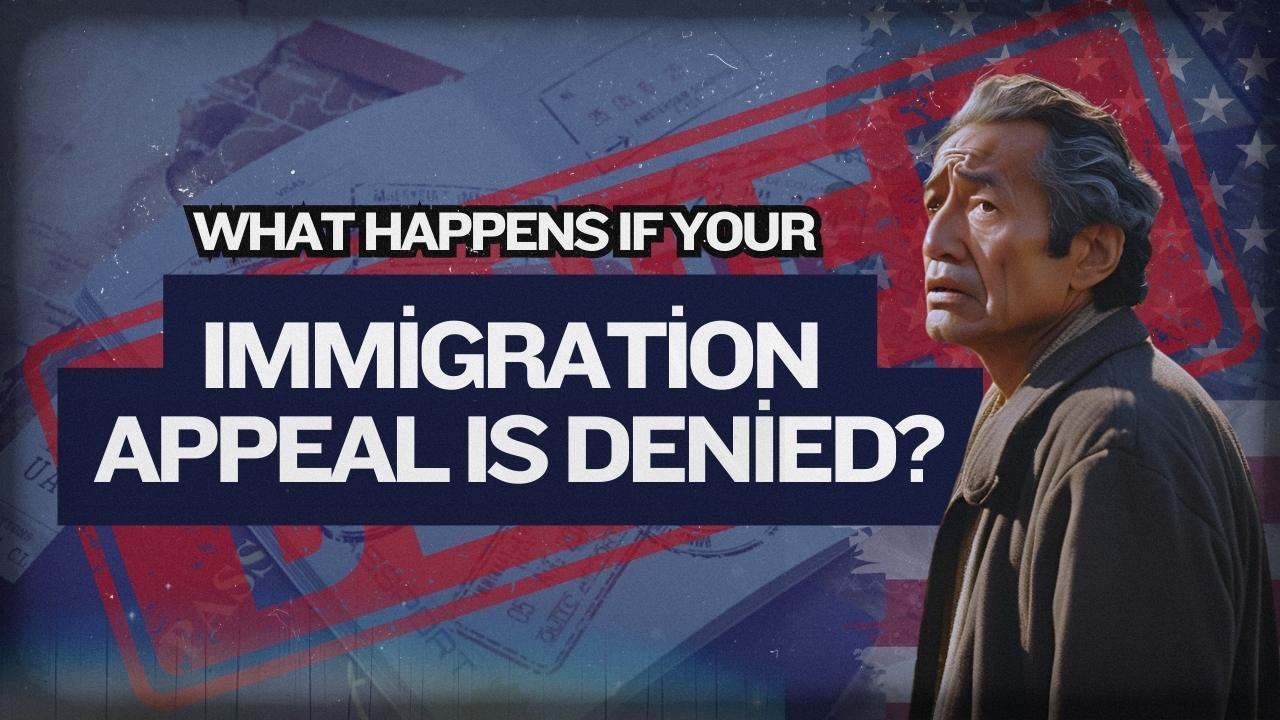Navigating immigration laws can feel overwhelming, especially after a rejected appeal—but remember, a “no” doesn’t always mean the end of the road. Understanding your options and taking the right steps forward can turn things around.
What Does an Immigration Appeal Denial Mean?
When an appellate body, like the Board of Immigration Appeals (BIA), affirms the decision of a lower authority, such as an immigration judge or the U.S. Citizenship and Immigration Services (USCIS), it is known as an immigration appeal denial; in other words, the appeal body agrees with the initial decision that rejected your application.
What to Do After an Appeal Denial?
If your appeal has been denied, you have several paths to explore:
1. Seek Judicial Review
- What it entails: You can challenge the denial in federal court. This process involves filing a petition for review in a U.S. Court of Appeals.
- Time-sensitive: Federal courts typically require you to file within 30 days of the appeal decision.
- Considerations: This route can be complex and may involve significant legal fees, so consulting an experienced immigration attorney is highly recommended.
2. Motion to Reopen or Reconsider
- Motion to Reopen: You present new facts or evidence that were not available during the original case.
- Motion to Reconsider: You argue that the decision was legally incorrect based on the evidence and laws applicable at the time.
- Filing deadline: In most cases, you must file an appeal within 30 days of the decision date (not the date you receive it). Certain cases, like the revocation of a petition’s approval, have a shorter 15-day deadline. The decision notice will specify your filing timeframe, and this filling deadline cannot be extended. However, if the decision is mailed to you, an additional 3 days is granted—making it 33 days for a denial and 18 days for a revocation.
3. Explore Other Immigration Options
Even if your appeal is denied, you may qualify for other immigration benefits. Options include applying for:
- Family-based immigration petitions.
- Employment-based visas.
- Humanitarian programs like asylum or Temporary Protected Status (TPS).
4. Voluntary Departure
If further appeals or motions are not feasible, you may be eligible for voluntary departure instead of being subjected to removal proceedings. Voluntary departure allows you to leave the U.S. on your own terms, avoiding some of the long-term consequences of deportation.
5. Contact an Immigration Attorney
Given the high stakes, consulting a qualified immigration lawyer is critical. They can evaluate your case, suggest the best course of action, and help you navigate the complex legal procedures involved. Raju Law, for instance, specializes in immigration cases and provides tailored advice for clients in challenging situations. Contact Raju Law here for expert guidance.
Factors to Consider After a Denied Appeal
- Timelines: Legal actions like motions or judicial reviews have strict deadlines.
- Costs: Be prepared for potential expenses, including filing fees and legal representation.
- Documentation: Keep all paperwork related to your immigration case organized and accessible.
- Risks of Overstaying: If your status has expired, you risk removal proceedings and possible bars on re-entry.
Frequently Asked Questions
Can I appeal the decision again?
What happens if I don’t act after my appeal is denied?
What is the success rate for motions to reopen or reconsider?
How long do I have to leave the U.S. after a denied appeal?
Can I reapply for immigration benefits after a denial?
Key Takeaways
- Understand Your Options: Judicial review, motions, and exploring alternative pathways can help you move forward.
- Act Quickly: Immigration matters are time-sensitive; delays can limit your options.
- Seek Legal Support: Professional guidance is essential for navigating the complexities of immigration law. Raju Law provides expert assistance to help you resolve your case effectively.

